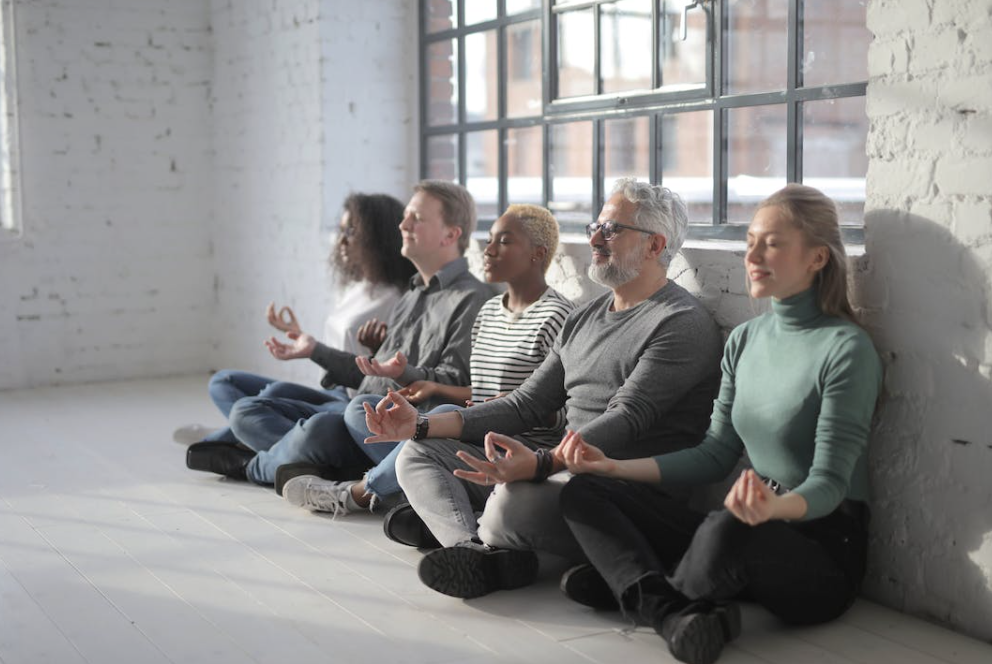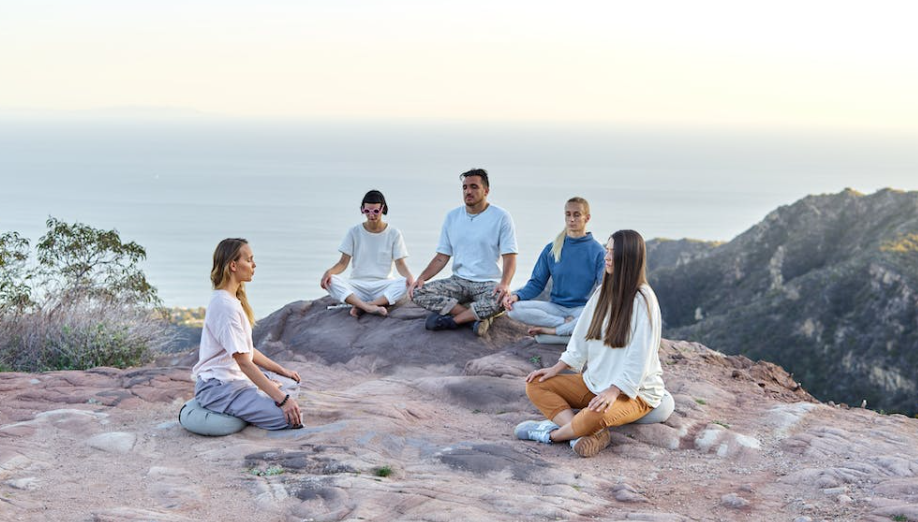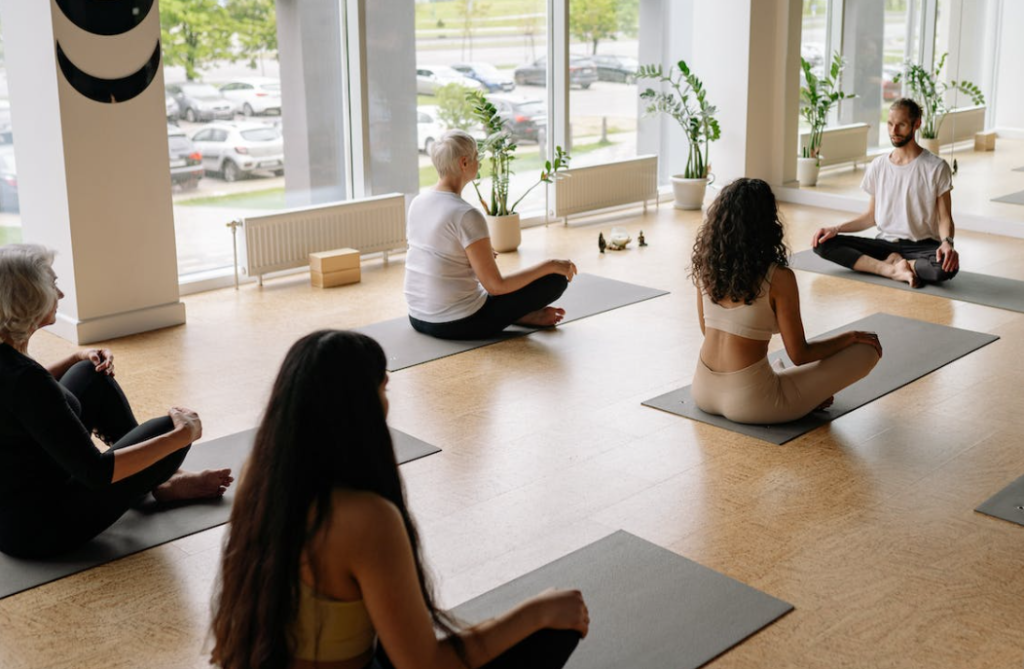Meditation Group
Discover the power of meditation and how to use it to achieve your goals as a group.

Selfpause Affirmation App
Download the app to get 1,000’s of affirmation meditations and everything you need to write, record and listen to your own.
There are many benefits to joining a meditation group. For one, meditation is easier when surrounded by other people, making it more likely to stick with it, and it can even help you get through tough times. By sitting in a group, you’ll be able to float on the peace and tranquility of others, and you’ll also have someone to share frustrations with and ask for guidance. Plus, you won’t feel like you’re alone in your struggles, which makes it less likely that you’ll give up.
Creating a meditation group

The first step in creating a meditation group is to invite people to join you. You can use social media, such as MeetUp, to find people who share similar interests and goals. You can also create a virtual meditation group on the internet or via Skype. This will allow members to stay in touch and feel supported by others who have similar interests.
One way to make a meditation group more enjoyable is to choose a theme. You can create a theme that reflects your own spirituality. You can choose an uplifting word, such as “peace,” or you can use an object from nature. After the theme is chosen, the group will sit in silence and breathe in the word and out the “I am.” The members of your group may choose to imagine that word written in gold letters against a blue sky or sense something that represents the word. You can vary your theme every month or every session.
Once you have decided on a theme, create a time for group members to share. A mindful sharing period can include a variety of activities, such as guided meditation and silent meditation. During this time, the group members should introduce themselves and share some of their experiences with the group. During this time, members may also choose to share a mantra or a specific saying that is meaningful to them.
As the facilitator, it is your role to establish a safe environment for the group to practice. A facilitator does not necessarily have to be a teacher, but they can help guide discussion and keep the group on track with a clear purpose. They can also help you organize the meetings. This can help you keep everyone on track and ensure a quality experience.
Once the group is up and running, it is important to find a location that works for everyone. Many meditation groups are held on a weekend morning in the early morning, and it is important to coordinate the time for everyone so that everyone can attend. Depending on the size of your group, you may want to hold some sessions at different times or days.
Meditation groups are becoming increasingly popular as a way to connect with others and deal with stress. Anyone interested in facilitating a meditation group should consider doing so. The first step is finding a comfortable location with minimal distractions, and selecting a meditation method that works best for you and the group.
Meditation groups are a wonderful way to help people improve their health and build a community of like-minded people. The benefits of group meditation are many, and they include a sense of community, opportunities to learn from each other, and the opportunity to share your knowledge with others. However, starting a meditation group can be difficult, and many people find it challenging to sit quietly for long periods of time.
Creating a meditation group in a secular setting

Many secular meditation groups have been called stealth Buddhists for imposing religious values without being obvious. Pioneers of these programs have avoided mentioning their Buddhist roots, perhaps to avoid offending their participants or making things more difficult for service managers. However, this approach can backfire, because it can appear as if you’re trying to force Buddhism on people.
Creating a meditation group in a clean, friendly environment

Hosting a meditation group is an excellent way to make the experience more accessible to others and hold people accountable to their regular practice. Whether you are a beginner or a seasoned practitioner, a group can help you develop the habit of regular practice. Joining a group can also give you the support and motivation that you need to stick with it. Typically, a meditation group starts with just a few interested friends who share a common interest.
Setting up a meditation group can be as simple or as complex as you choose. It’s important to create a comfortable, calm environment. A good way to achieve this is to keep the space simple and uncluttered. Avoid putting things in the room that will distract you from achieving the goal of meditation.
Our Top FAQ's
To start a meditation group, you will need to decide on a specific type of meditation to focus on, find a suitable location to hold the group meetings, and recruit participants. You may want to consider setting a regular meeting time and frequency, and promoting the group through social media or by posting flyers in your community.
Some good meditation techniques for a group setting include mindfulness meditation, loving-kindness meditation, and breath awareness meditation. You could also consider incorporating other practices such as yoga or tai chi into the group meetings. It may be helpful to choose techniques that are easy to understand and practice, as not all participants may be experienced meditators.
The frequency of meditation group meetings will depend on the preferences of the group and the availability of the location and facilitator. Some groups meet weekly or biweekly, while others may meet monthly or on a less regular basis. It’s important to find a schedule that works for the majority of participants and to be consistent in order to build a sense of community within the group.
To create a welcoming and inclusive environment in the meditation group, consider establishing ground rules or guidelines for participation, and make an effort to be inclusive and respectful of all members. You may also want to provide information about meditation and its benefits to new members, and encourage open and honest communication within the group.
If conflicts or challenges arise within the meditation group, it can be helpful to address them directly and openly. Encourage group members to communicate their concerns and listen to each other’s perspectives. It may also be helpful to seek the guidance of a trained mediator or facilitator if needed.
